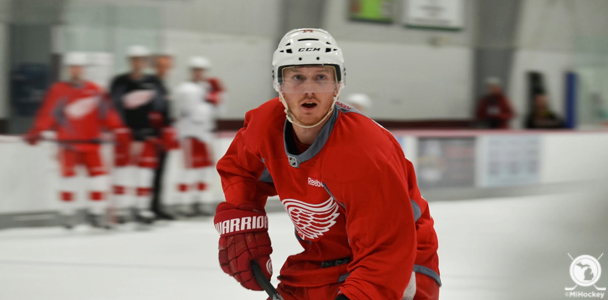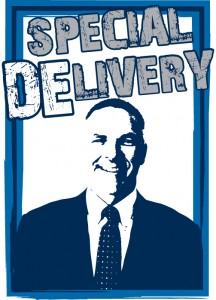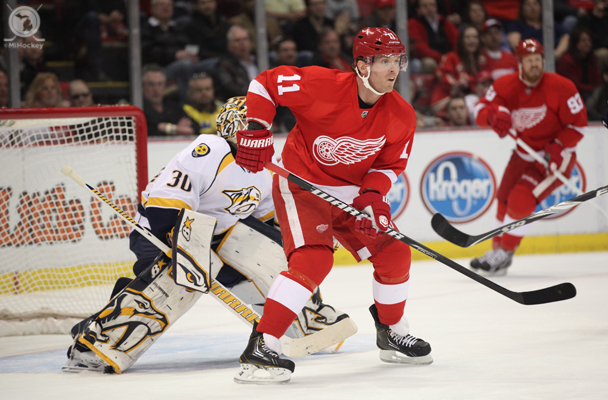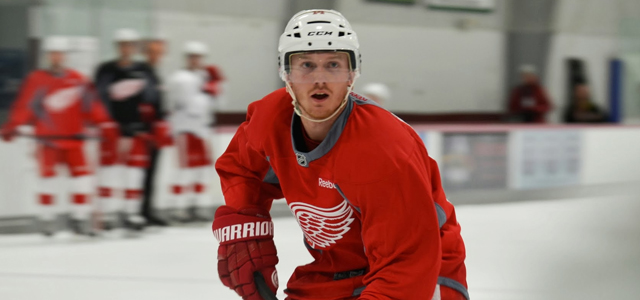Eliot: Preseason hockey has a different meaning for all parties involved


By Darren Eliot –
Follow @Darren_Eliot on Twitter
Training camps in the NHL have long since changed from opportunities for the players to get in shape to the league getting to preseason games as quickly as possible as revenue generators. Still, there are things to be gleaned from the “exhibition season”, some of which involves players getting used to new rules, organizations gauging where younger players are in their development and under the new Collective Bargaining Agreement, the newer phenomenon of seeing veteran players in camp under PTO’s, or Professional Tryout, agreements.
Locally, the PTO scenario played out in a bizarre manner for the Red Wings and Dan Cleary. First, he was to attend the Wings’ camp under that pretense and then reportedly signed a three-year deal with the Philadelphia Flyers. Cleary instead inked a one-year contract with the Wings, saying Philly was just a PTO opportunity. It all worked out for Cleary and the Wings, with a role defined, a coach’s confidence and roots here in Detroit. Meanwhile, Tim Thomas tries to restart his career in Florida after a year hiatus and Hal Gill tries to extend his in Philly. These games have real meaning for both of those players – different obviously than the importance of the games they competed in as part of Stanley Cup teams, but vital to their careers in the moment.
What hasn’t changed is what training camp and the preseason games mean to young players. In some cases, they are trying to secure a roster spot, which often times means proving they are ready and able to unseat a veteran player. That uncomfortable unspoken undercurrent remains a part of September for NHL players as it has throughout history. Contract status plays a part in the equation – as it always has – but at the root of this dynamic is competition from within. Strong organizations thrive on it and manage it – the Wings with Tomas Tatar and Gustav Nyquist come to mind – while struggling teams pluck from the draft and insert kids into the lineup before they are ready. The Edmonton Oilers are an example of that over the past decade.
The other scenario for young players in September involves making a good impression even though making the big club out of camp is out of the question. Again, we’re talking about deep clubs here, like our Red Wings. Take the first preseason game in Pittsburgh. Adam Almquist is a smallish defenseman in an organization that is very deep on the blue line. He played last season in Grand Rapids and will surely begin the season there again – probably without a call-up. But by scoring twice and playing well, he may have moved up the depth chart and put himself in a position to get called up under certain circumstances. Or, in the big picture, a strong preseason showing may turn a previously little known player like Almquist into a tradable commodity that helps the team down the road and advances his personal career.

Moving from the personnel, to the personal, to finally the practical, every year the league introduces new rules and the preseason games provide a forum for players, referees and fans to get acclimated to the changes. Goalies are dealing with equipment modifications, hybrid icing is being looked at and player safety is at the forefront, with charging, boarding and headshots all potentially carrying heavier penalties. Prospects Teemu Pulkkinen and Mitch Callahan both found out the hard way in the Red Wings’ second exhibition game, as both received five-minute boarding majors and game misconducts. Referees Dan O’Rourke and Justin St. Pierre were inclined to levy the maximum and set the standard heading into the regular season. That it happened to be two kids used as examples, well, that is part of preseason, as well.
An extension of player safety is the hybrid-icing rule being tested this preseason. Fans of local college hockey will recognize it and it isn’t all that complicated. The linesman determines who will win the chase for the puck on a potential icing play as the players approach the top of the face-off circle instead of the goal line. If the offensive player is deemed to have the best chance to get to the puck first, icing is waved off. If the defender is deemed to have the advantage, icing is signaled without requiring a touch of the puck below the goal line. The theory is to avoid unnecessary collisions along the end boards when players are moving at top speed. The league will vote near the end of the preseason whether or not to adopt the new rule for the upcoming season.
The goalies, well, they will adjust. A couple of inches off the goal pads in an effort to proportionately right size the fit of the gear won’t make that much difference. If I’m wrong, look for Craig Anderson and Corey Crawford to struggle. They were two of the ‘tenders that maxed out the height of their pads and with great success I might add.
But we will have to wait until the regular season – when the games mean equally to all – to make that determination. And the wait is almost over.

